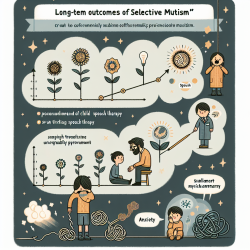Introduction
In the realm of community-based physical activity programs for children, the use of implementation models and frameworks is crucial for creating effective and sustainable interventions. A recent scoping review titled Implementation models and frameworks used to guide community-based physical activity programs for children: a scoping review sheds light on the importance of these models in guiding program development, exploration, and evaluation.
Understanding Implementation Models and Frameworks
Implementation models and frameworks are tools that help translate evidence-based interventions into practical community settings. They are specifically designed to identify factors influencing program outcomes and support the application of knowledge in practice. Unlike traditional theories, these models provide a structured approach to developing, exploring, and evaluating community-based programs.
Key Findings from the Scoping Review
The scoping review identified 27 articles that utilized various implementation models and frameworks. Among these, 11 process models, one determinant framework, and two evaluation frameworks were highlighted. The review emphasized the importance of components such as tailoring, situational analysis, and element identification in program development.
- Process Models: These models guide the translation of research into practice by describing the development of programs. The Behaviour Change Wheel was the most commonly used process model, highlighting its versatility in adapting programs to meet community needs.
- Determinant Frameworks: Only one framework, the A+ quality improvement toolkit, was identified. This framework helps assess the knowledge, execution, and resources necessary for program improvement.
- Evaluation Frameworks: The RE-AIM framework was predominantly used to evaluate program implementation, focusing on reach, efficacy, adoption, fidelity, and maintenance.
Practical Implications for Practitioners
For practitioners aiming to improve their skills in implementing community-based physical activity programs, the following recommendations are derived from the review:
- Utilize Process Models: Choose models that integrate local context into program design, such as the Behaviour Change Wheel, to ensure programs meet community needs.
- Conduct Situational Analysis: Engage in thorough community assessments to tailor programs effectively and align them with community values and resources.
- Focus on Partnerships: Develop strong collaborations with local stakeholders to provide context and resources that support program dissemination.
- Evaluate with RE-AIM: Use the RE-AIM framework to assess program implementation comprehensively, considering both short-term and long-term outcomes.
Encouraging Further Research
The review calls for further exploration of determinant frameworks to better understand the factors influencing program implementation. Practitioners are encouraged to engage in research that examines new and existing frameworks, contributing to the development of tailored, evidence-driven programs.
To read the original research paper, please follow this link: Implementation models and frameworks used to guide community-based physical activity programs for children: a scoping review.










